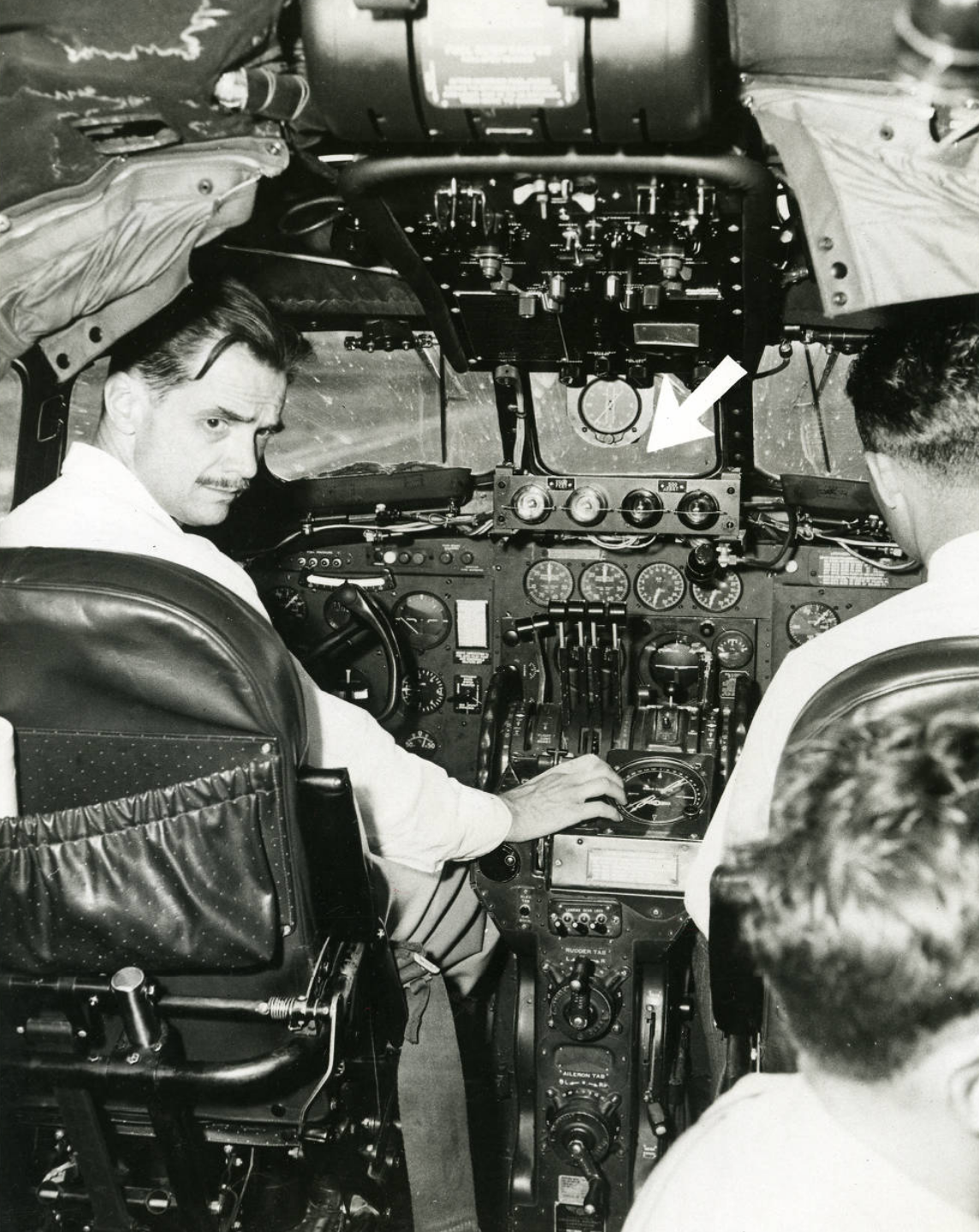
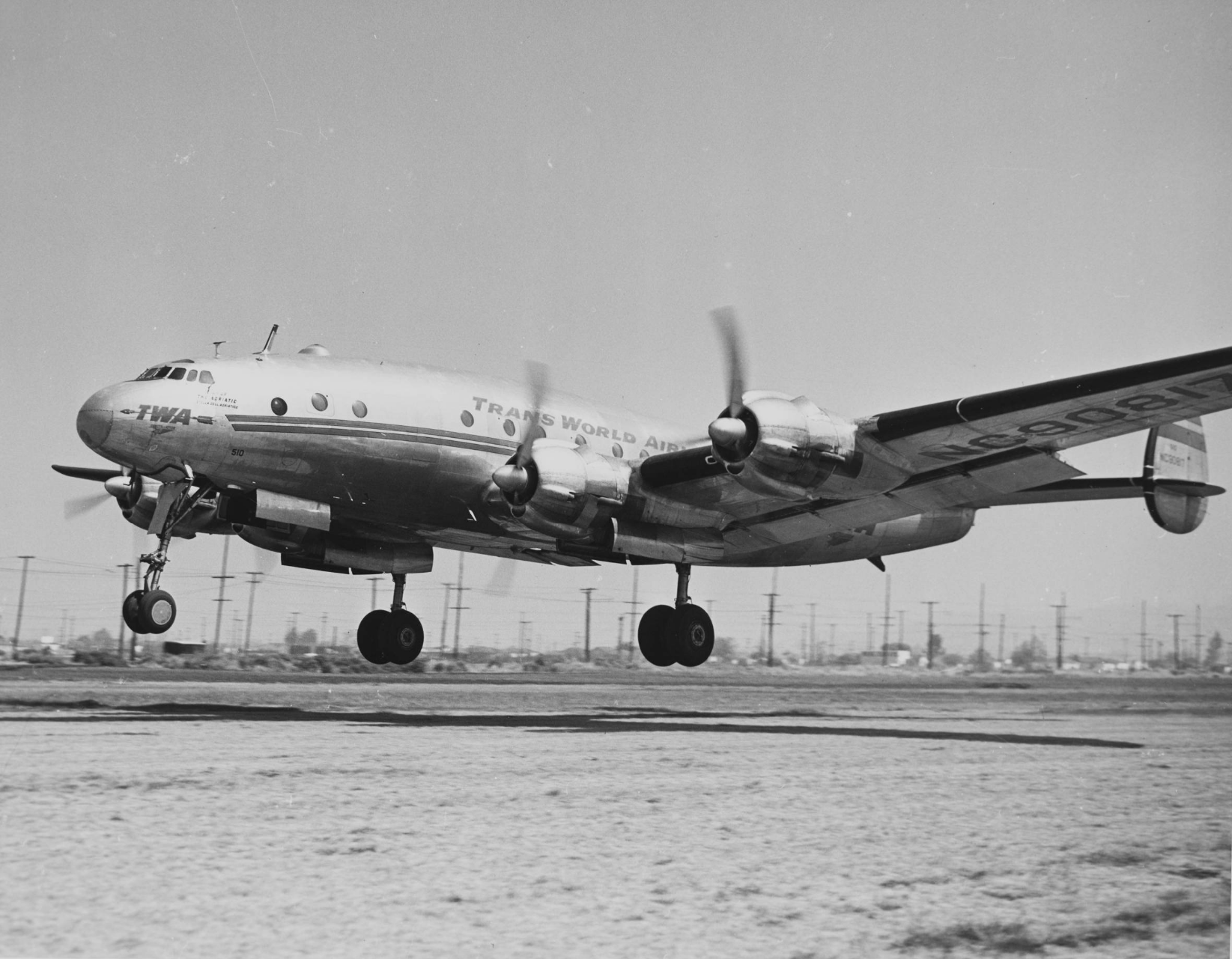
2 May 1947
The Los Angeles Times reported:
Howard Hughes Tests Air Robot
Howard Hughes, manufacturer-pilot and chief stockholder in Trans World Airline, yesterday demonstrated a 16-pound radar device which he believes will act as a “seeing-eye” for transport aircraft flying in darkness or bad weather and prevent a substantial share of airline crashes.
Using one of T.W.A.’s 45-ton Constellations, Hughes personally piloted a radar-equipped plane over—and sometimes practically in—the San Gabriel Mountain canyons north of Mt. Wilson to give visiting aeronautics writers a firsthand peak into the device’s operations.
Warning Lights
The apparatus consists of a robot-radar transmitter and receiver and a set of warning lights and buzzers. The transmitter emits 400 strong electronic pulses every second; the receiver catches them on the “bounce” at the rate of 1000 feet in one-millionth of a second.
Set at 500 and 2000 feet, the device thus gives audio-visual warning when the plane comes within range of objects or terrain at those distances. The “beam” itself is a pulsating cone showing obstructions within a 150-degree arc.
Climb Executed
Hughes demonstrated that the Connie, with its 8800 horsepower, can easily execute a turning climb out of a box canyon inside the 2000-foot warning range given by radar.
All T.W.A. planes will have this device within five weeks, he said, thus becoming the first radar-outfitted commercial transports. In production, the equipment can be made for $130 a set. It will be available “if wanted” to other airlines, he added.
—Los Angeles Times, Vol. LXVI, Friday Morning, May 2, 1947. Part I, Page 2, Column 4
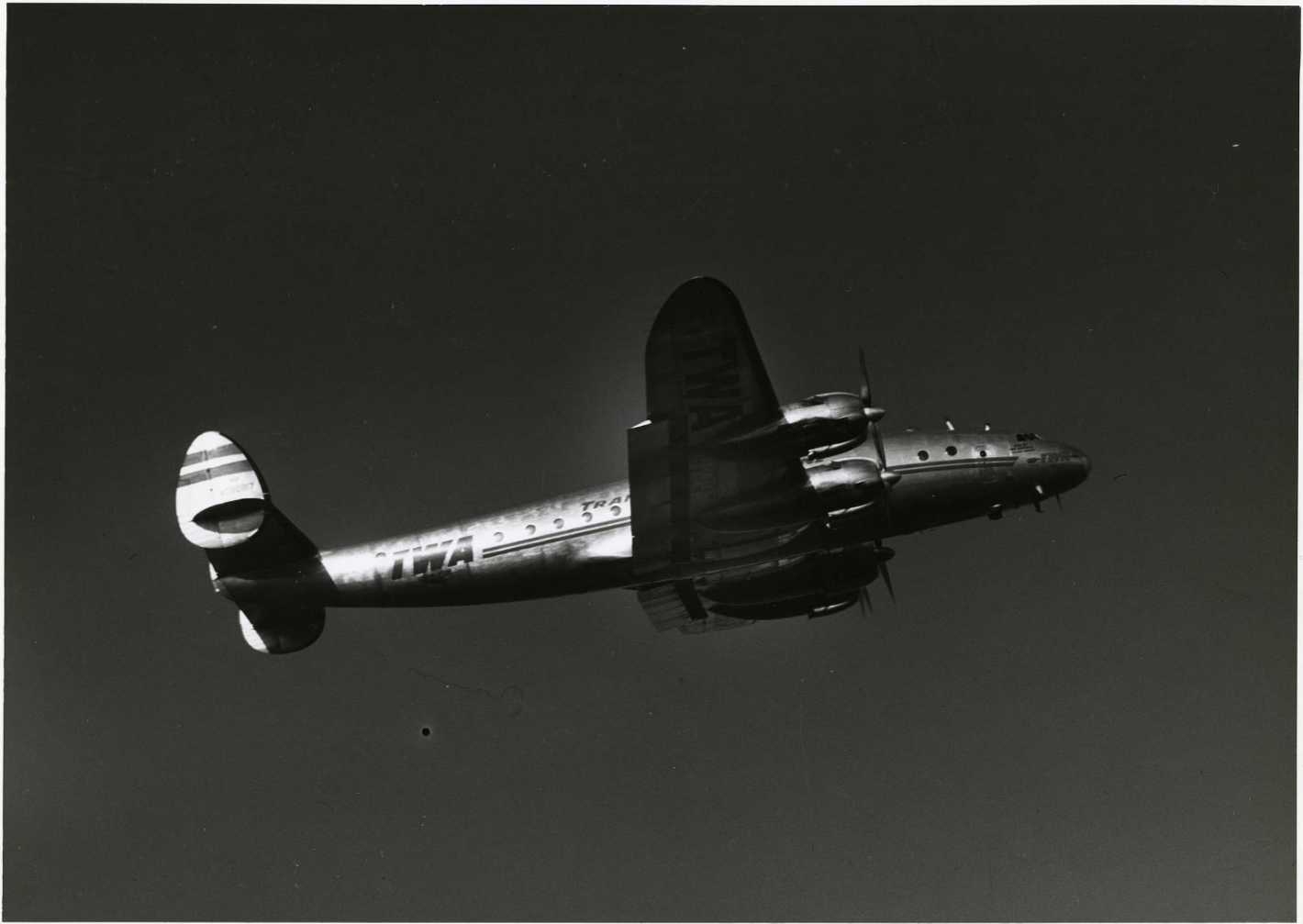
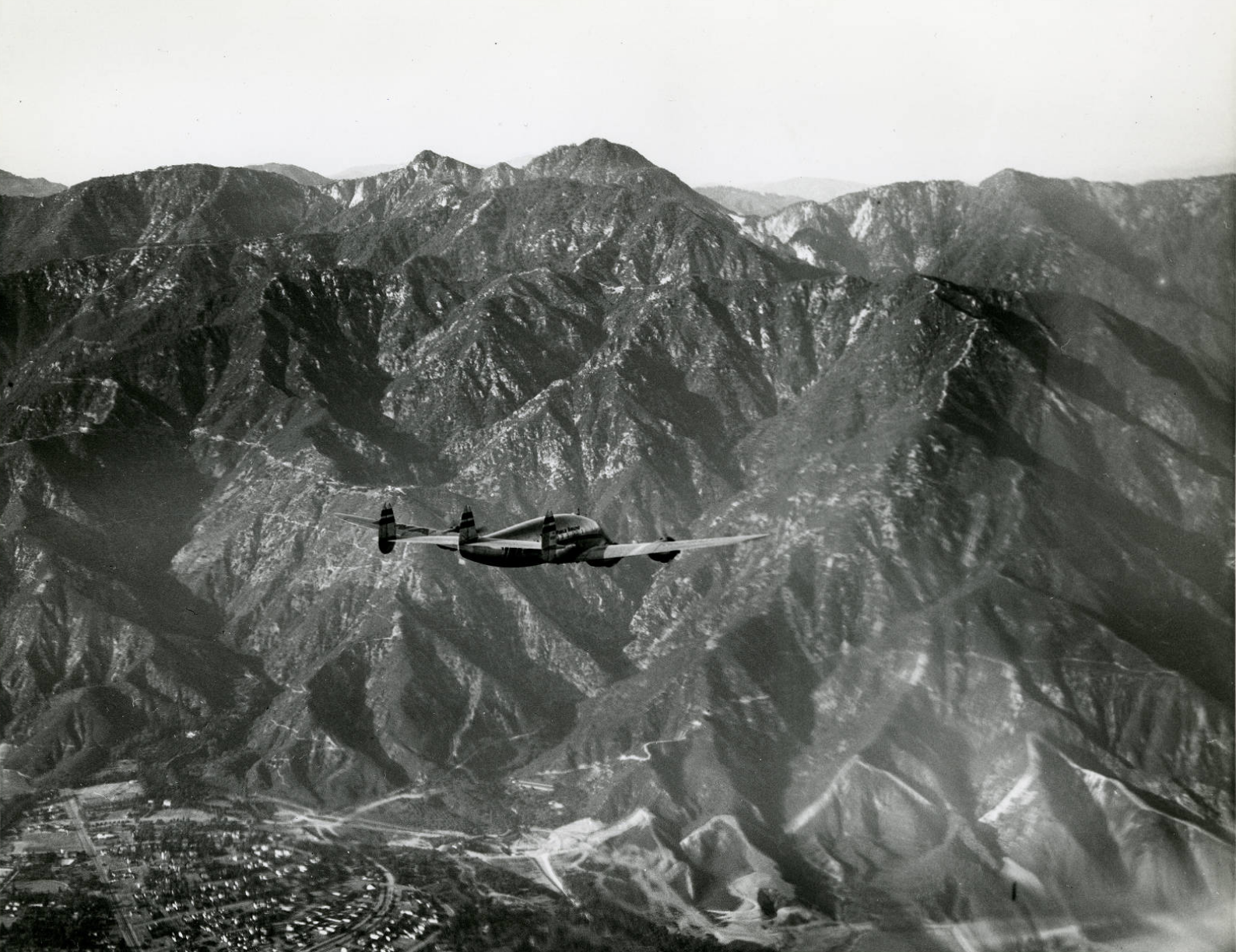
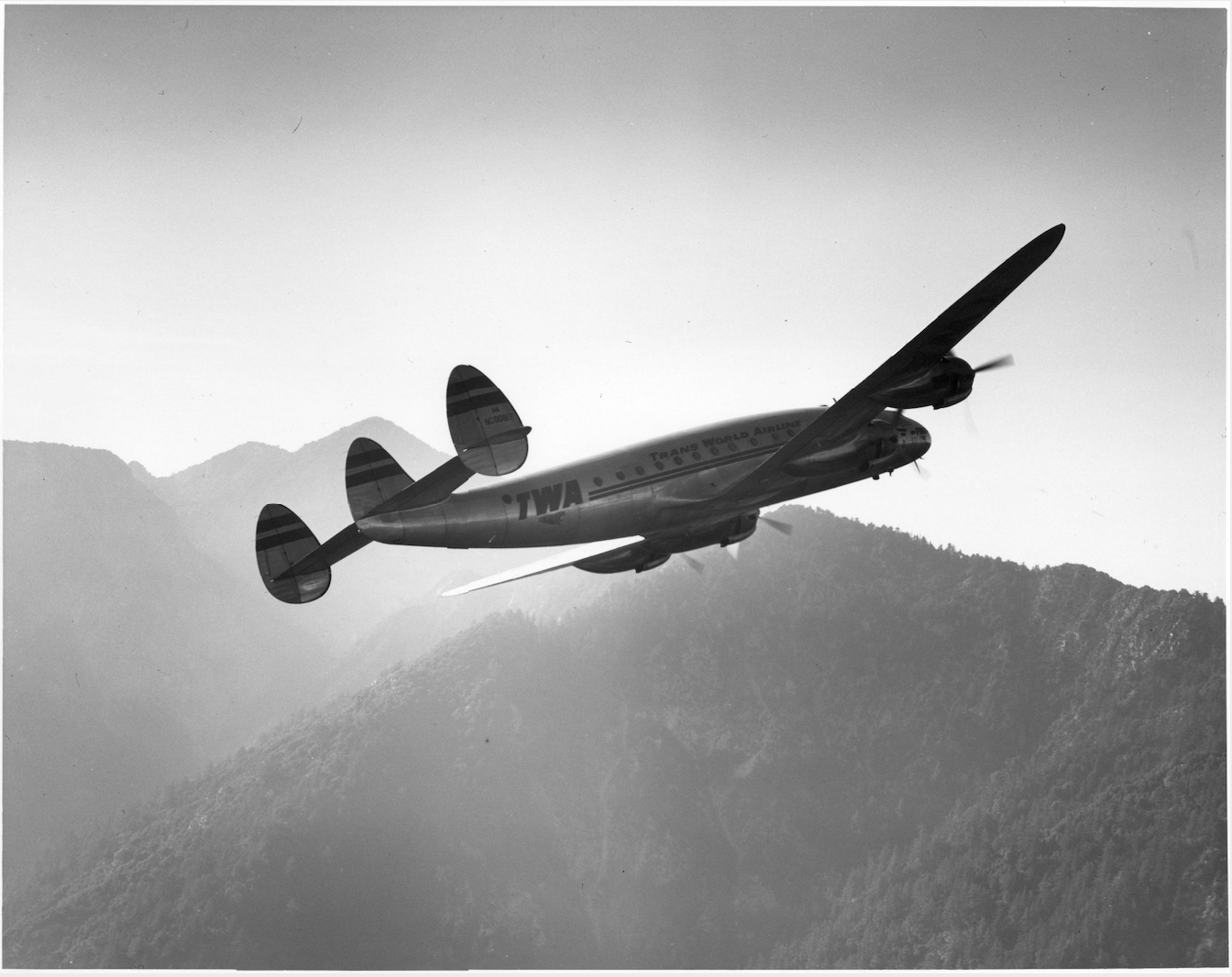
Hughes Demonstrates New Radar Device to Reduce Plane Crashes
By RALPH M. DIGHTON
CULVER CITY, MAY 1 (AP) —Plane builder Howard Hughes today personally demonstrated what he said was the world’s first successful application of war-developed radar to commercial airliners.
In a test flight for newsmen, a miniature radar device was set to flash warnings when the T.W.A. Constellation Hughes was piloting approcahed within 2,000 feet of terrain obstructions. The range of radar pulse mechanism was reduced to 500 feet for landings.
LIGHT AND CHEAP
The radar device weighs less than 16 pounds, compared with the 700-pound radar equipment carried in the P-60 Black Widow of war fame. Hughes said it could be installed in any plane for $130.
He plans to have these devices placed in all planes operated by Trans World airline, of which he is principal stockholder, in four or five weeks. It will be made available to other airlines at cost. As soon as airline requirements are met, he will release the equipment to private fliers.
“Earlier radar is difficult to interpret and requires a trained operator,” Hughes said. “It was so inefficient that we are throwing it out of our planes. This new device is simple. You set it for what ever range is necessary. I know it is accurate up to 5,000 feet. When the lights flash on, the pilot either climbs of veers to one side, as his knowledge of surrounding topography indicates.
The scope of the device is roughly a quarter of a sphere ahead and below the plane.
During the demonstration, Hughes piloted the Constellation through a canyon in the Santa Monica mountains north of here which pilots usually avoid.
LIGHTS FLASH ON
When the plane was within 2,000 feet of the mountain on the left hand side of the canyon, an amber light flashed in the cockpit. He continued approaching the mountain until he was less than 1,000 feet away. He then veered 160 degrees to the left, climbing at a speed of 300 miles an hour.
Just before he reached the peak, a red light flashed on, indicating the plane was within 500 feet of the mountain. By the time the plane surmounted the peak, both the red and amber lights had flashed off, showing that Hughes had cleared the mountain with the aid of his warning device by more than 2,000 feet.
The co-pilot on the flight was R.C. Loomis, director of the T.W.A. engineering and overhaul base at Kansas City.
–The San Bernardino Daily Sun, Friday, May 2, 1947, Page 2, Column 1 and 2